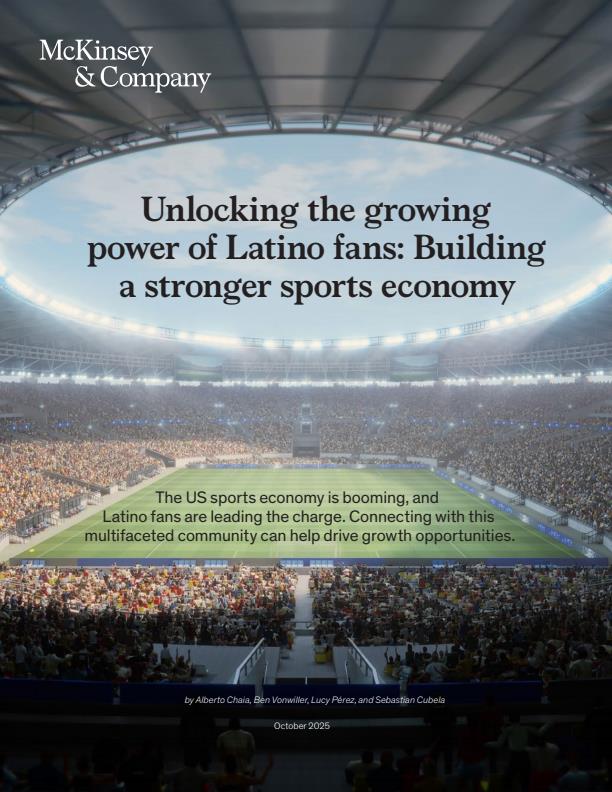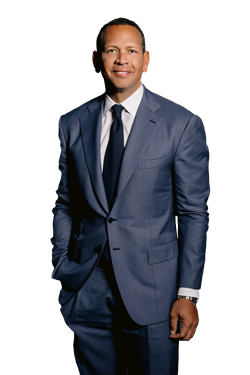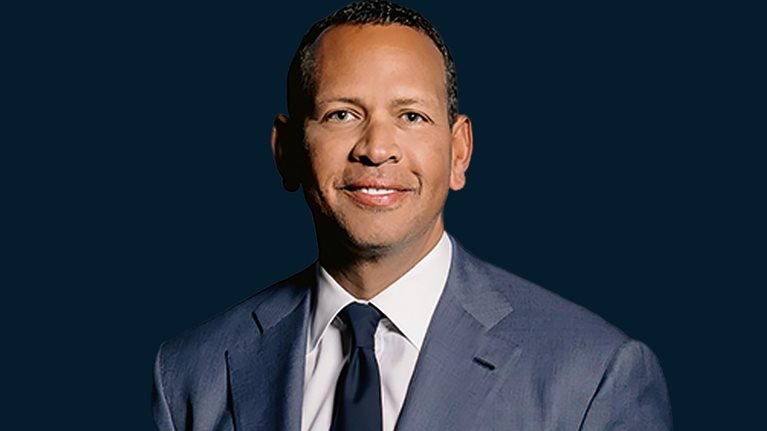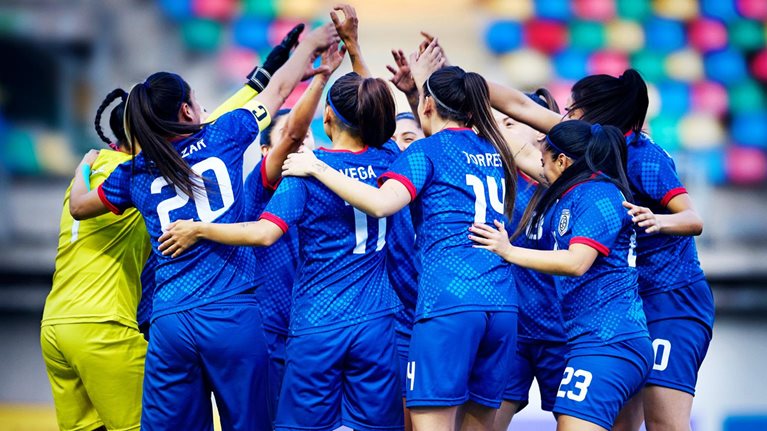Across stadiums, screens, and social platforms, Latinos represent the future of sports fandom in America. Young, passionate, digitally fluent, and willing to spend, this fan group embodies the habits and expectations of tomorrow’s audience. With ties to professional leagues, community clubs, and recreational sports, Latino fans are a powerful force that drive ticket sales, streaming, and media consumption at scale. And as members of one of the fastest growing and most diverse demographic segments in the United States, these fans have an influence that is only accelerating.
Despite this potential, the richness of Latino fandom is often overlooked by media, marketers, and sports teams. Latino fans represent an audience that is not only growing quickly but also highly engaged across multiple channels and communities. For businesses, reaching Latino fans is an economic imperative, a smart growth strategy, and a way to build a stronger sports community. Latino sports fans are a multifaceted force of influence and consumer power, capable of driving revenue, brand loyalty, and long-term engagement. The question is not whether they will transform sports; it’s whether organizations will be ready and willing to capture the community-building and business opportunities that Latino fans create.
This report explores the trends, gaps and growth opportunities driven by Latino sports fandom. Our research, conducted in collaboration with NBCUniversal’s Telemundo, draws from McKinsey analysis, third-party research, and two original surveys: one of about 2,500 self-identified sports fans and another of Latino executives and board members. We also interviewed dozens of executives from major sports leagues and related organizations (see sidebar “About the research”). The findings are clear: Latino fans are not a niche segment. They are a central force with potential to unlock the next era of sports growth.
Our analysis shows that the US sports economy could nearly double to more than $300 billion by 2035, and Latino fans could represent one-third of that growth. Their youth, diversity, and deep enthusiasm across multiple sports give them an outsize role in shaping consumption patterns, media engagement, and community-building. Latinos already make up nearly 20 percent of the population in the United States, and their share continues to rise, bringing powerful new opportunities.
What makes this multifaceted demographic especially exciting is Latinos’ sophistication: They are omnichannel enthusiasts who fluidly engage with sports across live, broadcast, streaming, and digital experiences. They are not monolithic but represent diverse subgroups with varied touchpoints and affinities. At the same time, Latinos remain underrepresented within the sports workforce—an area where progress could create even deeper connections between fans, teams, and culture.
As we examine the potential of Latino sports fans, we explore the ways in which organizations, communities, and businesses can reach this demographic. Dorene Dominguez, CEO of the Vanir Group, who holds an ownership stake in the Sacramento Kings and became the first Latina to serve as a National Basketball Association (NBA) governor, told us, “Latino fan engagement is absolutely a top priority for us. Our league is global with a diverse fan base, and here in the US, we are fortunate to have a thriving Latino community. We must nurture this intersection.”
The opportunity is here. By understanding the unique characteristics and preferences of Latino fandom, sports leagues and teams, brands, and media outlets can connect with communities that will shape the future of sports in America.
How Latino fandom is powering growth in US sports
The sports economy is experiencing a dynamic period of growth, driven by expanding fan bases, evolving media platforms, and increasing investment. As the broader sports ecosystem evolves, so does Latino fandom and its emerging role in shaping the future of sports.
The sports economy’s rapid rise
Sports in the United States are currently on a trajectory of significant growth. We conducted an analysis of the sports market by looking at rights holders—leagues, teams, and federations—and their four core revenue streams: media, sponsorship, ticketing, and merchandise. We also looked at the surrounding sports ecosystem that fans and advertisers engage with, including broadcasters, sportsbooks, youth sports, sports video games, agencies, venues, and ticketing platforms. Forecasts are based on expected fandom and revenue per fan evolution, which assumes modest fandom growth paired with healthy fan monetization gains.
Our analysis found that the value of the US sports economy in 2024 was $160 billion and that it is likely to nearly double to more than $300 billion by 2035, representing a 6 percent annual growth rate. This expansion will be driven primarily by rights holders, who currently account for over half of the market, as well as rapidly growing segments such as youth sports, which is expected to grow at a 9 percent CAGR. The growth is fueled by an increasing sports fan population, rising participation in youth sports, and heightened fan engagement across five major professional sports leagues—Major League Baseball (MLB), Major League Soccer (MLS), the National Basketball Association (NBA), the National Football League (NFL), and the National Hockey League (NHL)—which account for roughly 70 percent of the sports ecosystem.
Latino fans: A growing force in the US sports ecosystem
Latino sports fans are a vibrant and rapidly growing segment of the US sports economy. According to the US Census Bureau, Latinos are the second-largest demographic in the United States (behind non-Hispanic White people), as well as one of the fastest-growing groups. They currently make up about 20 percent of the population, with projections indicating they will constitute 28 percent by 2060.
Our analysis reveals that Latinos currently represent 19 percent of the current $160 billion sports ecosystem, a figure roughly in line with Latino representation in the general population (Exhibit 1, part 1).
In the next decade, as the sports ecosystem grows to more than $300 billion and as the percentage of Latinos in the United States increases, we project that Latinos will make up about 25 percent of the sports economy in 2035 (Exhibit 1, Part 2).
However, Latino share of the sports economy is not uniform across all segments. We will explore the nuances and pockets of opportunity in greater depth later in this report, but as an example, Latinos are currently underrepresented in revenue generated from media rights (11 percent) and make up a higher-than-parity percentage of revenue from youth sports (25 percent) (Exhibit 1, part 3).



Looking forward overall, we anticipate that Latino fans will contribute one-third of growth in the US sports economy by 2035, highlighting their pivotal role in shaping the industry’s future (Exhibit 2). Although Latinos will drive most of the growth of sports fans on account of their growing share of the US population (according to US Census bureau projections, they will account for 77 percent of total US population growth by 2035), their contribution to overall market value growth is likely to be closer to one-third. That’s because the industry’s expansion will be driven more by increases in revenue per fan than by the volume of fans. Latinos’ share of that growth will continue to increase. As the sports landscape evolves, understanding and authentically engaging Latino fans will be essential for teams, leagues, and brands seeking to build lasting connections and drive growth.

Growing Latino consumer power
Latinos are also a growing force in consumer spending in the United States. According to a 2021 McKinsey report on the economic state of Latinos in America, Latinos spend 20 percent more than non-Latinos, and Latino household consumption is growing faster, at rates 35 percent greater than for non-Latinos. A 2025 report from California Lutheran University and UCLA found that Latinos have been responsible for more than 30 percent of the growth of the US national GDP since 2019, despite being less than 20 percent of the population. The US Latino GDP reached $4.1 trillion in 2023, surpassing the GDP of nations such as France, India, and the United Kingdom and equivalent to the fifth largest in the world.1
Our McKinsey sports fan survey reveals that dynamic Latino consumer spending is reflected in sports, with Latino fans spending 15 percent more than non-Latinos across sports categories including live event tickets, streaming TV packages, print and digital media subscriptions, and licensed merchandise. When adjusted by income, Latino fans spend 50 percent more (Exhibit 3). Notably, this higher level of spending compared with that of non-Latinos is consistent across generations and among both casual and avid fans.

Latino fans: Driving sports engagement at and off the field
Latinos demonstrate their enthusiasm for sports through in-person attendance and engagement with media. Latino respondents to our fan survey are 27 percent more likely than non-Latinos to attend at least one live sporting event annually. This heightened in-person engagement underscores not just a passion for sports but also a strong communal and cultural connection to the game day experience. For many Latino families, sports represent more than entertainment. They are a central thread in community life, and game nights are often shared, multigenerational experiences. As one owner of a professional women’s soccer team told us, “When Latinos come to games, it feels different. They bring whole families, and they’re super engaged. It’s not just a game; it’s a way of connecting.” Sports fandom, particularly around soccer, baseball, and basketball, often serves as a form of cultural identity and pride.
Excitement extends beyond the stadium, as Latino fans have higher participation rates than non-Latinos in many forms of sports media and advertising. Latinos are omnichannel enthusiasts, embracing digitally native channels. Our fan survey reveals that Latinos are 14 percent more engaged than non-Latinos across various forms of digital-native media, including social media interactions, sports website visits, participation in fantasy leagues, and viewership of game highlights. Latinos are also highly engaged with sports on streaming platforms. For example, our fan survey results reveal that Latinos subscribe to ESPN+ at a rate 18 percent higher than that of non-Latinos and to Prime Video at a rate 11 percent higher.
The pattern for social media is similar. When it comes to specific platforms, Nielsen research reveals that Latinos are 54 percent more likely than non-Latinos to consume sports content on WhatsApp, 37 percent more likely on TikTok, and 33 percent more likely on Instagram relative to the general population, illustrating a preference for fast-paced, interactive, and social formats over traditional broadcast television viewing. The segment’s digital savviness, combined with strong responsiveness to sponsorships during sporting events, highlights a uniquely dynamic approach to sports consumption that blends digital engagement with brand interaction.
Latino youth: Powering the future of sports
Latino youth are at the heart of America’s sporting future. Youth sports not only represent 15 percent of today’s sports ecosystem but also drive societal benefits that go well beyond the field. Participation is associated with higher college enrollment, greater holistic health (including lower obesity rates) and reduced delinquency rates. For Latinos, these outcomes have ripple effects—not just a stronger base but also more engaged communities.
Latino youth participation is thus both a leading indicator of fandom and a driver of broader societal gains. Closing the participation gap—by addressing barriers of cost, time, and inclusion—will not only strengthen the next generation of fans but also cultivate the leaders and change makers of tomorrow (see sidebar “How youth sports shapes Latino professional success”). Sports organizations that invest in Latino youth are, in effect, investing in the future vitality of the entire sports ecosystem and beyond.
With a demographic profile that skews younger and more digitally connected than the general population, Latinos already account for 26 percent of the US population under 25 years old. And according to US Census data, approximately 56 percent of Latinos are under the age of 34. This generational tilt means that how Latino youth engage with sports today will profoundly shape the sports ecosystem tomorrow.
Between 2019 and 2024, according to data from the Sports and Fitness Industry Association (SFIA), Latino youth sports participation grew at a compound annual growth rate of 3.9 percent—nearly double that of non-Latino youth. By 2024, more than half of Latino youth (53.7 percent) were active in sports, just 2.8 percentage points shy of their non-Latino peers, marking significant progress from the 6.3-point gap in 2019.
This growth has been fueled by local leagues’ diversity initiatives and rising Latino household incomes, all of which have expanded access to organized activities. The shift is particularly notable among young women: Participation among Latina girls rose from 39.5 percent in 2019 to 48.4 percent in 2024, outpacing the growth of their non-Latina peers. This surge reflects national trends in team sports, including the notable rise of women’s sports, and the success of targeted outreach to historically underrepresented groups. Many organizations—such as Ella Sports Foundation, Girls on the Run, Sports 4 Life, and the Women’s Sports Foundation—have launched or created programs with a goal of serving girls in underrepresented communities to encourage physical and mental health through sports.
Despite this growth, Latino youth still are not at parity with non-Latinos when it comes to participation in youth sports. There are several obstacles to engagement. Costs—averaging nearly $1,000 annually per child, and up to $3,000 for teens, according to SFIA—pose a steep barrier. Time is another constraint. Twenty-five percent of Latino parents cite scheduling conflicts, compared with lower rates among non-Latinos (Exhibit 4). Inclusion also matters. According to McKinsey research in collaboration with the US Soccer Federation, Latino and Black children are three times more likely than White children to stop playing soccer because they feel unwelcome.

These challenges not only limit participation but also can have an impact on long-term fandom development. Our survey found that Latino youth who play competitive sports are three times more likely than nonparticipants to become avid fans as adults.
Understanding the nuances of Latino fandom
At a time when sports organizations are seeking to grow audiences and deepen fan relationships, overlooking Latino fans means missing a vital and growing part of the sports community. Doing so effectively requires an understanding of how the Latino community in the United States is diverse and dynamic, engaging with sports in multifaceted ways. Among the key areas that can help organizations tap into Latino fandom are nuances of Latino engagement across different subgroups and sports, opportunities for growing media engagement with Latino fans, and Latino underrepresentation in the sports workforce. By exploring these opportunities and understanding the complexities of Latino sports fandom, organizations can develop strategies to better engage this vibrant and growing community.
Latino fandom is multifaceted
Treating Latinos as a monolith is a risk to understanding the full potential of the Latino fan. The US population includes approximately 68 million Latinos, with origins in more than 20 countries and a wide range of cultures and traditions. Mexican-heritage Latinos account for about 60 percent of the overall Latino population, followed by Puerto Ricans at about 9 percent, and people of Cuban descent at about 3.5 percent. According to Pew Research, nearly 70 percent of US Latinos are second- or third-generation Americans, with many moving easily between cultures and positioned to shape future media trends. Their expectations around language, authenticity, and inclusion will define the next generation of sports fandom.
According to Global Web Index (GWI, a market research company), Latinos represent nearly one out of every five sports fans in the United States, but as mentioned earlier, their preferences for different sports vary widely. Soccer is popular (28 percent of MLS fans are Latino), while hockey is less so (14 percent of NHL fans are Latino). In between are basketball (20 percent of NBA fans), baseball (17 percent of MLB fans), and football (16 percent of NFL fans) (Exhibit 5).

Within the broad category of Latinos, there are notable differences in sports affinity across various heritage groups. Our survey reveals that sports fans of Puerto Rican, Cuban, and Dominican descent tend to index higher for baseball. Several South American communities also maintain strong soccer traditions. Even within sports, there is variation in fandom. Multiple leaders for professional sports teams told us they engage with fans differently depending on their country of origin. As one owner of an MLS team told us, “You can’t treat Latinos as a monolith. Colombians, Argentinians, and Mexicans have different soccer traditions, and their fandom clearly reflects that.” A marketing executive for an MLB team told us, “Mexican fans have a deep historical connection to our team, but when we engage with Dominican or Guatemalan fans, their expectations are different.”
The variance among fandoms across leagues can provide insights into how Latinos engage differently across sports. There’s also opportunity to convert current Latino enthusiasm for international soccer leagues to major league soccer in the United States. According to market research company MRI-Simmons, Latinos are 10 percent more likely to follow international soccer than the MLS, which includes teams only in North America. Nielsen reports that in 2022, Latinos watched 1.6 times more total viewing hours of the English Premier League and 9.4 times more hours of Liga MX (the highest level of Mexico’s professional soccer system) relative to the MLS (see sidebar “¡Gooooool! How Latino engagement fuels fútbol frenzy in the United States”).
As noted earlier, Latinos spend 15 percent more across sports-related categories than non-Latinos (and 50 percent more when adjusted by income), but subgroups vary in how they choose to spend (Exhibit 6). For example, people with Cuban and Puerto Rican heritage tend to spend proportionately more on live events than other groups, while fans of Dominican Republic descent spend relatively more on fantasy leagues or betting. And those of South American descent spend relatively less on fantasy leagues or betting but proportionally more on branded merchandise.

In serving Latino audiences, organizations can deepen engagement by understanding and honoring cultures. Latino respondents to our fan survey are four percentage points less satisfied than non-Latinos with the amount of sports content reflecting their culture and perspectives. Sixty-three percent express an interest in sports content highlighting their culture, athletes, and communities, versus 55 percent of non-Latinos. Fifty-seven percent indicate they would deepen their engagement with sports if teams launched culturally specific initiatives such as heritage nights, partnerships, or community celebrations.
Latino fans express a strong connection to brands and content that visibly incorporate cultural elements that are meaningful to their communities. For example, according to Nielsen, Latinos are 37 percent more likely to feel loyal to a brand that sponsors a sport they follow.2 This points to an opportunity for more inclusive storytelling and tailored media experiences.
Opportunities for richer media engagement with Latino fans
Media outlets, teams, and leagues that invest in culturally informed, bilingual content and more inclusive representation stand to unlock greater resonance and long-term development.
As previously noted, Latinos have high levels of engagement when it comes to digital-native forms of media consumption, including paid subscriptions. However, their sports consumption of linear broadcast TV depends on the content provided.
Nielsen reports that Latinos account for only 11 percent of hours spent watching MLB, NBA, NFL, and NHL broadcasts, significantly below their 20 percent share of the US population and fan base (Exhibit 7).3 In contrast, Latinos represent 26 percent and 98 percent of watched hours in the United States for the English Premier League and Liga MX, respectively.

Although viewership for linear TV has gone down across all audiences due to the rise in popularity of streaming, Latinos in the United States show lower engagement with traditional broadcast television than non-Latinos. Using GWI’s audience insights platform, we found that they are 20 percent less likely than non-Latinos in the United States to watch games on broadcast TV and 8 percent less likely than viewers in Mexico. This structural under-engagement in traditional media reflects broader challenges in aligning sports content delivery with the habits and preferences of younger Latino fans. This pattern extends beyond sports: Nielsen reports that across age groups, Latinos average 14 to 26 percent fewer hours of total television viewing compared with non-Latinos.
Language plays a critical role in shaping Latino sports media consumption. Although 68 percent of US Latino respondents to our fan survey speak Spanish at home, there is relatively little Spanish-language content availability. According to Nielsen, Spanish-language sports broadcasts represent only about 5 percent of their total viewing hours. This underrepresentation particularly affects Latinos born outside the United States, 30 percent of whom prefer to watch games in Spanish, according to our fan survey. The supply is not there to meet the demand. For many bilingual fans, the issue may not be a lack of interest but a lack of options.
While Latinos may be underrepresented when it comes to linear TV, they overindex on streaming. Nielsen data shows that Latinos consume 56 percent of their television content through streaming, compared with 46 percent for non-Latinos.4 Latino fans are clearly present and engaged. The challenge and opportunity for sports organizations is to meet them where they are—with the appropriate content, on the appropriate platforms, and in the appropriate languages.
Beyond the field: Latino underrepresentation in sports management and media
Representation across sports organizations—on rosters, in front offices, and among game day staff and leaders—plays a critical role in determining whether outreach feels authentic and whether fans see themselves reflected. Increasing Latino presence, particularly in decision-making roles, is essential for strengthening community ties, cultivating authentic fandom, developing more relevant campaigns, and avoiding cultural or linguistic gaffes. Visible pathways from the field to leadership positions indicate belonging and can help foster a sense of community. As one MLS team owner told us, “Having Latino players on the roster and in the front office isn’t just about talent, it’s about connecting with the community. Representation on the field translates to representation in the stands.”
Today, Latino representation presents a mixed picture, with significant disparities across leagues and roles. According to The Institute for Diversity and Ethics in Sport (TIDES), Latinos constitute between 1 and 30 percent of players in major leagues, depending on the sport. Yet they hold just 5 percent of management positions and 12 percent of staff roles overall. Baseball and soccer illustrate the imbalance most clearly: Latinos make up more than 30 percent of players but a much smaller share of management and staff (Exhibit 8).

The underrepresentation extends into the media landscape. Nielsen reports that Latinos in the United States are 19 percent more likely than the general population to feel underrepresented on television. In sports journalism, the data backs this up. A 2021 Associated Press Sports Editors (APSE) survey of more than 100 sports-related newspapers and websites found that Latinos constituted only 5.3 percent of reporters—well below their share of the US population.5
Tapping into the full potential of Latino fandom
Latino fans in the United States are one of the most dynamic and rapidly growing segments of sports fandom. They engage deeply with sports—attending games in greater numbers, consuming more content across platforms, and spending more on sports-related products than non-Latinos. But future growth is not guaranteed. It requires intentional strategies to sustain engagement and build connection across generations.
Previous McKinsey research on the opportunity to close the monetization gap in women’s sports identified four stakeholders that can accelerate growth: investors, marketers and sponsors, media, and rights holders (teams and leagues). The following four areas—awareness and community building, digital, youth, and brands—are key focus points for these stakeholders as they seek opportunities for growth with Latino fans.
Awareness and community building: Becoming culturally relevant
The most effective engagement starts with presence in communities and culturally relevant storytelling. Teams like the Los Angeles Dodgers have built Viva Los Dodgers into a signature program, offering live music, food, and partnerships with local organizations to celebrate Latino heritage every season. The Brooklyn Nets’ Nets Unite campaign does the same in basketball, blending culture and sport to support fandom. The NFL’s announcement that Puerto Rican superstar Bad Bunny will headline the next Super Bowl halftime show is generating excitement from sports and music fans alike. Beyond events, greater Latino representation on the field, as well as in front offices, can foster belonging and help organizations think like their audiences.
Lowering access barriers also matters. Initiatives to lower ticket prices packages and provide affordable merchandise—as the NBA’s Utah Jazz did recently when it lowered concession prices in response to fan feedback—can make sports experiences more attainable for families of differing income levels (including but not exclusive to Latinos) and strengthen long-term ties. Media accessibility matters, too. As one MLB executive told us, partnering with Spanish-language broadcasters led to a “significant uptick in Latino viewership,” underscoring the appetite for content that speaks directly to Latino fans.
However, it’s important to note that these efforts cannot be one-off events or symbolic gestures. Superficial efforts that simply showcase diverse faces risk constituting tokenism. Real impact requires sustained commitment, authentic engagement, and true community building that integrates Latino voices and perspectives into the core of the sports experience.
Digital: Meeting fans where they are
Latinos skew younger and more digitally native, meaning sports engagement from rights holders, brands, and sponsors must be omnichannel and span multiple platforms. Because Latinos also overindex in streaming compared with non-Latinos, digital content delivery represents a key growth channel. Teams are experimenting with short-form video, interactive fan features, and influencer partnerships across outlets like Instagram, TikTok, WhatsApp, and YouTube to meet fans where they spend their time. For example, there are MLB Español and NBA Latam TikTok accounts that post in Spanish. And several basketball teams, including the Los Angeles Lakers and the Miami Heat, focus on engaging with Latino communities through Instagram Live sessions and Reels.
At the same time, Spanish-language sports content remains undersupplied relative to demand, creating a notable growth opportunity. Broadcasters are beginning to expand Spanish coverage of major sports in the NFL, NBA, and the Olympics, while streamers are investing more in live sports rights to capture Latino audiences. As Latinos continue to lead in streaming adoption, sports content delivered in Spanish across digital platforms represent a powerful lever for deepening engagement.
Brands also have the opportunity to use gen AI to tailor messages that resonate more with Latinos. Bilingual and culturally specific ad campaigns that engage millennials and Gen Z, supported by data-driven personalization, can help rights holders and brands craft messaging that better resonates with audiences across devices and channels.
Youth: Investing in the next generation of fans
Engaging with Latino fandom over the long term requires investment in the next generation. Collaborations with Latino-focused organizations and schools build trust while making sports more accessible. The Denver Broncos have set an example with community grants for youth sports equipment, helping reduce the cost barrier for underserved families. Neighborhood leagues and school-based hubs also matter, as they limit travel and lower time commitments for parents.
The payoff is clear. According to Youth Sports Business Report, 80 percent of parents view brands more favorably when they actively support local youth sports programs.6 By investing in grassroots participation, leagues and sponsors alike cultivate healthier communities for the present and the future.
Brands: Cultural authenticity
Sports play a meaningful role in many Latino households, but authenticity is critical. Campaigns that tap into shared cultural touchpoints, such as sports as a gathering point for family and friends, can resonate. At the same time, marketers should account for the great diversity within the Latino community, tailoring to different heritage groups differently across different sports and understanding nuances between leagues and among teams.
Some brands have already demonstrated how tailored strategies can succeed. Corona’s long-standing MLB sponsorship integrates bilingual content and in-stadium activations. McDonald’s has used FIFA World Cup campaigns to highlight Latino traditions of family viewing, pairing ads with community watch parties. Pepsi has blended sports and Latin music—sponsoring events while activating with reggaetón artists—to connect with younger bicultural audiences. Nike has invested heavily in grassroots soccer programs in Latino neighborhoods, focusing on free clinics and community partnerships.
The payoff is real. According to Nielsen, Latino sports fans are 39 percent more likely than the general US population to recommend a company that sponsors sports they follow and 37 percent more likely to feel loyal to those brands.7
The Latino fan base is no longer a niche; it is the blueprint for the next generation of American sports fandom. Young, digitally fluent, and deeply connected to community, Latino fans embody where sports consumption is heading. For leagues, teams, media, and sponsors, this is an opportunity to foster connections: By 2035, Latinos are expected to account for one-third of total US sports market growth. Organizations that act now—by creating authentic content, meaningful experiences, and with greater representation—can drive growth, build lasting trust with one of sports’ most dynamic fan communities, and foster a more inclusive industry. The question is no longer whether Latino fans will shape the future of sports but who will rise to meet them there.




